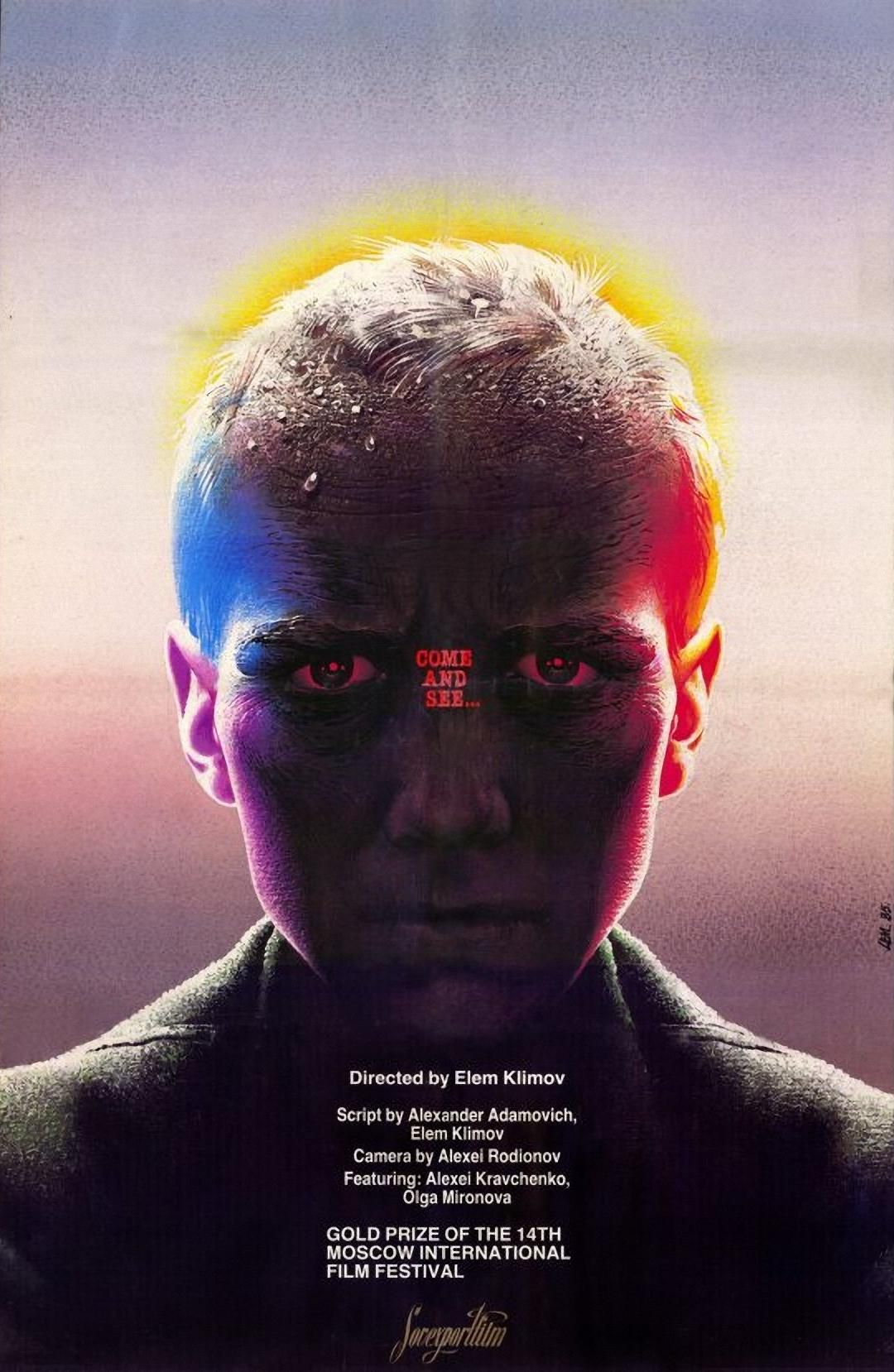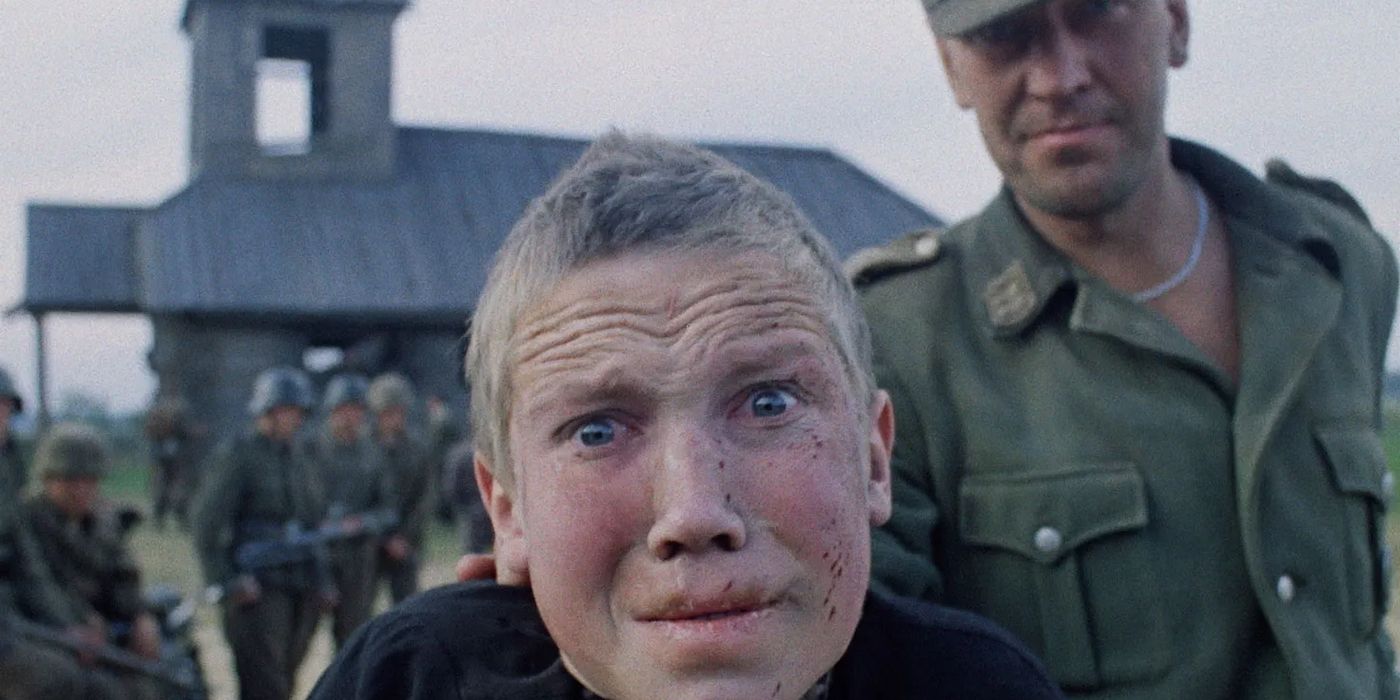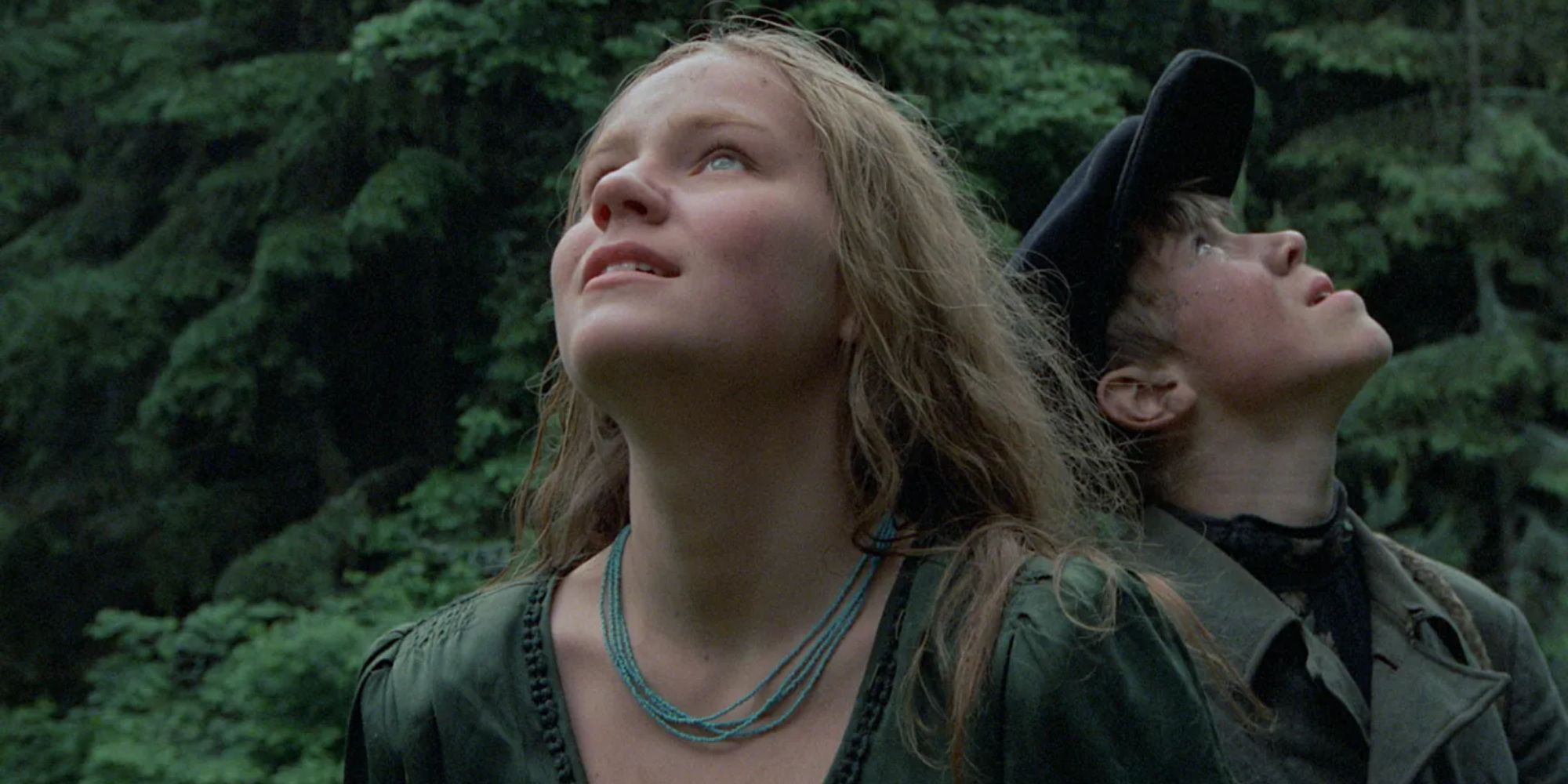Editor's Note: The following contains references to torture and sexual assault.
There are plenty of reasons that Soviet filmmaker Elem Klimov’s 1985 anti-war film Come and See is heralded as one of the greatest (and most gut-wrenchingly brutal) cinematic works of all time, one of them being that the film’s ‘climax’ is a 25-minute sequence that showcases one of the most sickening depictions of wartime Hell ever shot. Written by both Klimov and Belarussian writer Ales Adamovich, the film is adapted from the latter’s 1971 novella Khatyn (about the titular Khatyn village massacre during WWII) and his 1977 memoir Out of the Fire, itself adapted from the true-life testimonies of over 300 survivors from Belarus about the atrocities they witnessed at the hands of the Nazi regime. The fact that it’s based so carefully on true stories makes it all the more terrifying to watch, but films aren’t always made for the sole purpose of escapism. While movies can succeed in transporting one away to distant galaxies or historical eras, sometimes a film exists to bring its viewers as close to tragedy as humanly possible, providing an experience that not only informs but enforces emotional sympathy into a time that audiences would surely rather forget.

Come and See
Not Rated
Where to Watch
*Availability in US
- stream
- rent
- buy
Not available
Not available
Not available
Release Date
September 3, 1985
Director
Elem Klimov
Cast
Aleksey Kravchenko , Olga Mironova , Liubomiras Laucevicius , Vladas Bagdonas
Runtime
142 minutes
What Is Elem Klimov's 'Come and See' About?
For Elem Klimov, forgetfulness was never an option, as the director made several painstaking decisions throughout the production process to reinforce the piece’s authenticity through and through. Set in 1943, Come and See follows Flyora (Aleksei Kravchenko in an incomparable depiction of wartime youth), a 14-year-old Belarussian boy who’s ecstatic to find a fallen soldier’s rifle buried in the middle of a sand-filled trench. He runs home to his mother (Tatyana Shestakova), announcing his conviction to join the Soviet partisan army, and in a sequence that begins barely five minutes into the film, his mother scolds him about the horrors of war he is no doubt unprepared for, imploring him to kill her and his little sisters as if he’s leaving them for death, they all may as well “get it over with”.
Flyora is conscripted regardless and what follows is hours of constant struggle and strife as he travels through a barren land devoid of hope or mercy. There’s barely a moment of respite for Flyora, though nothing that he faces compares to the horrific sequence that acts as the equivalent of the film’s main course (even if it’s already stuffed you with the most stomach-churning appetizers imaginable).
‘Come and See’s Climax Is a Violent, Unflinching Look at the Horrors of War
Close
It’s a common sequence in war movies where naïve soldiers stumble upon a burnt city or village and are forced to digest the true horrors of war now that they’ve seen it from up close. Soldiers killing each other is one thing, but soldiers killing innocents leaves a particularly bad taste as it brings characters face-to-face with the failures of not just an army, but the human race. Some of the more brutal war films out there (take The War Game or Barefoot Gen for example, which applies the same ethos to nuclear war), don’t just show the aftermath, but the destruction as it occurs. While some may consider this approach as exploitative, sensationalizing a tragic story that doesn’t necessarily belong to the filmmakers telling it, a real anti-war movie can only ever strive for authenticity, lest the failures of the human race are sugar-coated and made light of with the passing of time.
To be honest, though, knowing what takes place will not ease its impact in the slightest. Just before the climactic sequence in Come and See, Flyora is left alone, having been separated from his troupe with fellow soldiers that he’s watched get picked off one by one, whether by distant gunfire, land mines, or aerial machine guns. It’s only in this sequence, however, that Flyora sees the true wrath of the fascist Third Reich up close. After attempting to steal a horse, he’s caught by the horse’s owner who, instead of punishing him, hurriedly takes him to the village of Perekhody to fix him a new identity. Unfortunately, there’s little time, as the Nazis arrive and lock the village’s entire population into a church. Flyora tries to warn the village people, but not only is it too late, but the Germans are also just too strong. Flyora escapes the church, but instead of allowing him to flee, the Nazis hold a gun to his head, forcing him to watch as the church’s inhabitants burn alive. Here, Flyora acts as a stand-in for the audience, themselves brutally subjected to a garish spectacle that they would much rather forget. But the Nazis want Flyora to witness the inevitability of their evil, and Klimov wants his audience members to do the same.
Elem Klimov Spares No Survivors Any Misfortune in 'Come and See'

Two moments within this sequence raise it to poetic heights. As the Nazis shuffle the entire population into the village, they don’t do so with solemn remorse but with celebratory fervor and cheer. They constantly taunt the villagers as if living out their wildest schoolboy fantasies, testing the extent of their humanity when they tell the trapped villagers that if they leave their children, they’ll walk free. Silence punctuates the next minute or so as no one moves, not a single parent willing to leave their young behind. Flyora uses this as a means to escape, but in a war like this, the survivors can only envy the dead. The two aforementioned moments come through a contrast between the infant victims and the elderly. After Flyora’s escape, the horror of the scene only gets worse. A woman jumps through the barn’s window with her infant child, only to be dragged away by the hair by a troupe of German soldiers to be sexually tortured, with the child thoughtlessly tossed back inside like trash into a bin.
If that wasn’t sickening enough, as the barn burns, the soldiers leave a bedridden elderly woman hopelessly alone at a physically safe distance from the flames, forcing her to starve to death as she spends the rest of her days haunted by the sight of her deceased community. The choice that the occupants of the church have to give up their families for the sake of their survival is an important one, as it marks the perseverance of humanity throughout this unspeakable tragedy. Lina Wertmüller’s Seven Beauties made a powerful case for the spirit-breaking nature of war and the abandonment of virtue and principle in favor of survival.
Come and See argues otherwise, evidenced by its nigh-psychedelic ending in which Flyora imagines himself with a rifle at the head of an infant Hitler. Even after all he’s seen, he chooses not to shoot, and it is that precise anti-Machiavellian choice that suggests to the viewer that the human race, despite all its failures, is still worth fighting for.
How Accurate Is Elem Klimov's 'Come and See'?

It’s not just the long takes or technical skill that makes those 25 minutes so effective. In an interview from the 1986 Denver International Film Festival, Elem Klimov expressed that his goal was to make something more akin to a documentary, as in order to accomplish the team’s goals, “we had to be realistic to the maximum.” Klimov was against the idea of shooting the film in black-and-white as many war films and documentaries of the era had done in an attempt to maintain that sense of realism, even if the film’s colors are drab and muted as if looking at the world through glasses smoldered in the ash clouds of bombs. Furthermore, Klimov shot the film entirely on Belarussian soil and insisted upon using non-professional actors in an attempt to dissolve the very notion of professionalism and make the creators “disappear”. He goes on to explain “I mean that we shouldn't be thinking about being a director, a cameraman, actors, or film professionals. All this had to dissolve into the action itself." Klimov didn’t want the film to be celebrated as a technical achievement. Instead, he wanted to present war as a memory. It’s not a Hollywood or even a Soviet spectacle, simply 2 hours and 22 minutes of pure trauma injected straight into the viewers’ brains.
It's no surprise that Elem Klimov ceased to make any films after Come and See, claiming that he “lost interest” as “Everything that was possible [he] felt [he] had already done.” What makes the production process all the more tragic is that in 1979, Klimov’s wife Larisa Shepitko (herself a critically acclaimed filmmaker whose best-known work, The Ascent, won the Golden Bear at the 27th Berlin International Film Festival) tragically died in a car accident. When filming on his project finally began, Klimov must have channeled his relentless despair into his work as, watching Come and See, there is no doubt that it was made by creators reliving their lowest moments for an outstanding piece of genuine anti-war cinema. Come and See holds none of the camaraderie found in films like Saving Private Ryan or the victorious relief like at the end of 1917. Instead, this movie is pure war for all its unfiltered, unrelenting, and unapologetic misery.






